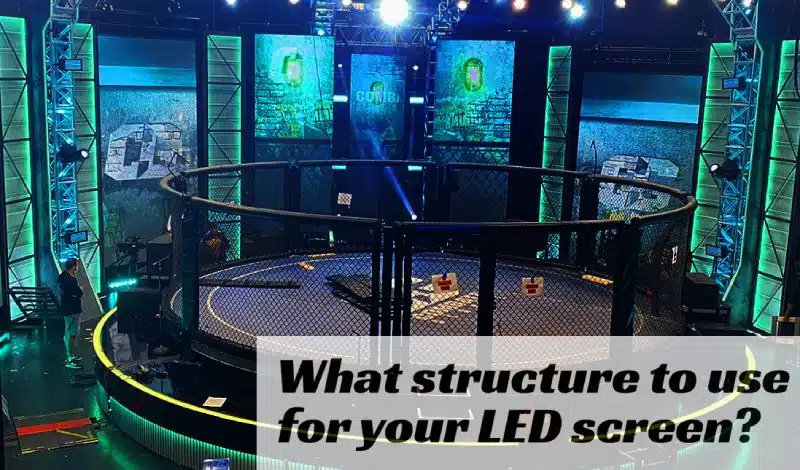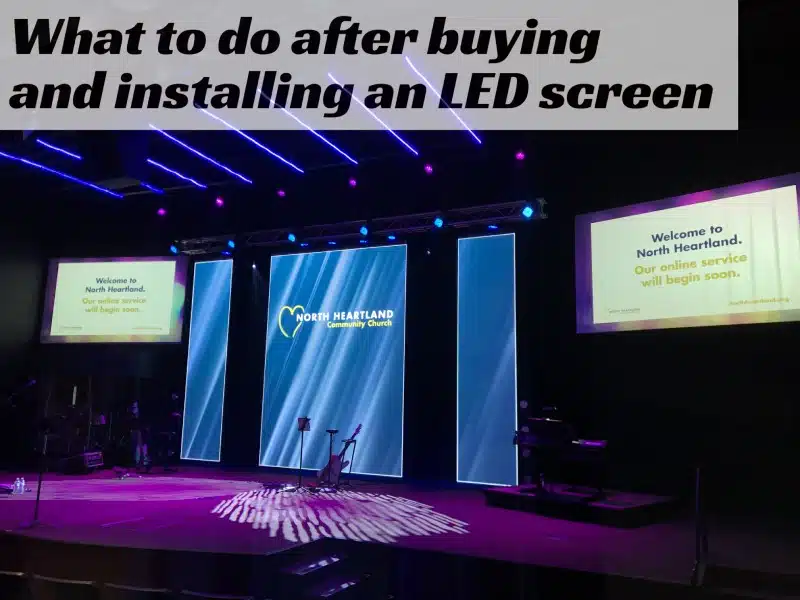
What structure to use for your LED screen?
What structure to use for your LED screen?
The supports or structures are adapted to the modular LED screens; that is, according to the team, the structures will be chosen, which will serve so that the entire projection works properly.
Assembly issues must be coordinated, from the beginning, with the technician, during the purchase or rental and then during the installation.
We will find several assembly options to organize as the case may be, among the best known structures are: the bulwark, hanging and floor.
In this article we will explain some options to dispose of the equipment.
What are the structures and supports for LED Video Walls?
The structures are frameworks that serve to keep the screens balanced and fixed; that is, they give complete security during the installation and also in the projection of the contents shown.
Because if the modules are not placed in a stable way, any malfunction may occur, such as being moved by strong winds, if someone or something collides with any part of the equipment, or by the vibration of the speakers. Various issues can cause images to appear shaky.
The different types of structures and supports are adapted according to the size and shape of the modules:
- In the case of structures for wall LED screens, called walled, the supports will be adapted to the architectural conformations or specific schemes where the screens will be located.
It is recommended to evaluate if the material of the wall is suitable for the installation or if the location of the modules at a reasonable distance is required.
- For its part, the floor structures for LED screens are made of steel or wood; this will provide the necessary solidity so that the modular is kept firmly; and at the same time it will allow to work with tranquility in the installation of the equipment.
It is easy to prepare because the frame comes with the screws required for assembly; In addition, these media can be easily transported because they are not large, which makes it possible to store them in a travel bag.
- Hanging structures. They are recommended in buildings with skeletons and fixed textures, in this way it will be possible to organize the screen of any size and according to the weight using the beams of the building.
In general, the support models have installation systems that give the possibility of creating prototypes, which in turn help make the production of the assembly agile and reliable.

What to do after buying and installing an LED screen
If you already have your LED screen installed, now you can start enjoying the event for which you bought it.
There are innumerable versions of LEDs available on the market, both to display advertisements on public roads, in shops or institutions; in turn, they are used to help each other in exhibitions, conferences and shows as well as in religious sermons.
Currently it is accessible to have modular or LED screens in private homes, mounted in environments with high or low lighting, to enjoy movies, spend the afternoon watching a recital, or simply to project images with beautiful views.
LED screens offer various visual and communicative possibilities, as long as you take full advantage of their technology, as described below:
- The technical composition of diodes will allow you to see the image clearly at different distances.
- The modules can be installed both indoors and outdoors, hanging from the ceiling, fixed on a wall or transported from one place to another.
- It offers the possibility of having control of what is shown, since it can be connected to an internet device, from where all the information that is available on the web can be obtained.
- The brightness of the Led lights is adequate for the space where they will be projected, as long as they distinguish between outdoor and indoor screens; to enjoy the quality of the projected image.
- Scenarios can be simulated according to how the modules are arranged, depending on the layout of the devices, at the bottom or at the top, a wide or narrow space will be perceived.
- The colors that are captured on the screens are very striking, impossible to go unnoticed.
- Moving images give the feeling of virtual reality.
What are the main characteristics of structures for LED technology?
One of the main characteristics of the structures for modular LEDs is that they can be customized:
- According to the particular provisions of the requirements.
- Designs adaptable to different conceptual versions.
- According to the architectural design and specific projects.
- There are different types of installation, both: floor to ceiling, and floor to wall; also for screens suspended from the ceiling or curved.
- Different models of fixed, mobile and independent installation.
Especially, if we refer to the ground supports, we find a diversity of models that will be adapted according to the uses:
- Reinforcement pillars, beams and accessories.
- Crank brackets.
- Indoor LED ground mounts in different sizes.
- Truss and goalpost lifting systems.
- Chain hoists, clamps and slings.


Where to find technicians specialized in Screenwalls?
In LED Nation you will find advice and information on supports for LED equipment. It is the best option when buying, renting and advising on the subject; since, they have technicians who accompany the client from the beginning until the experience, rental or purchase, of an LED video wall has been finalized.
The assistance of the technicians allows you to buy the product with confidence, since the equipment adapted to your needs will be chosen. This company offers several models of structures both to buy and to rent, if you enter their website you will know the different offers they have available; Likewise, you can take the opportunity to make inquiries on the subject.
